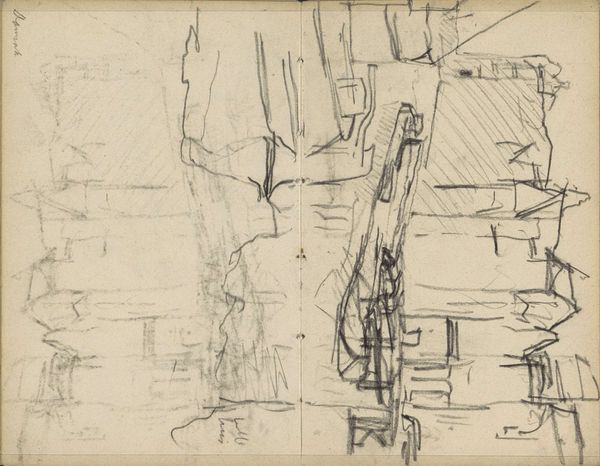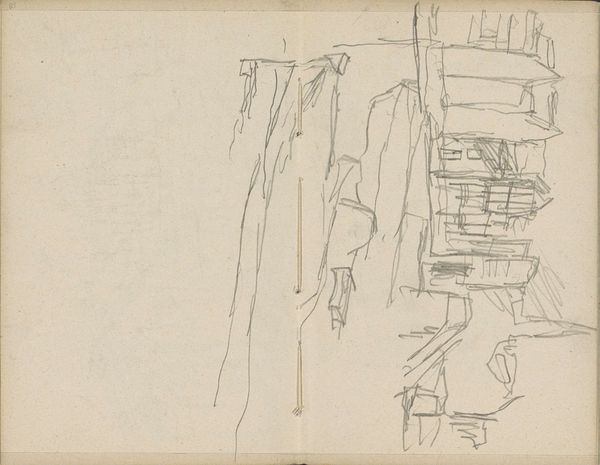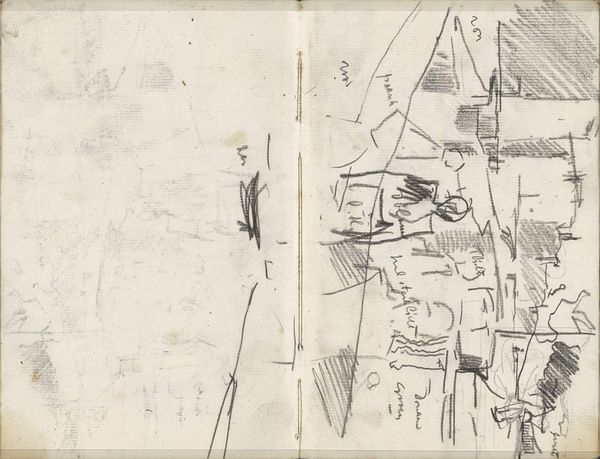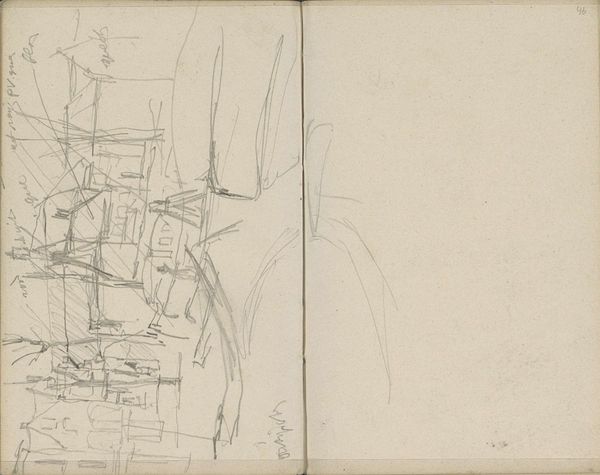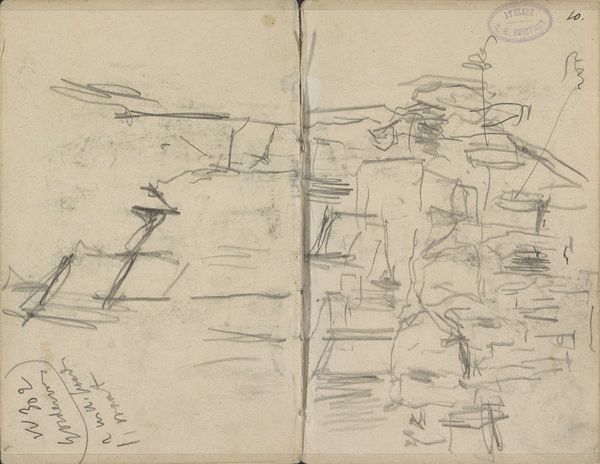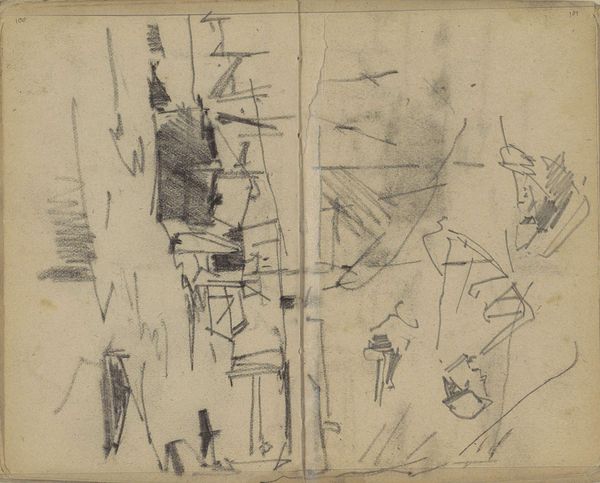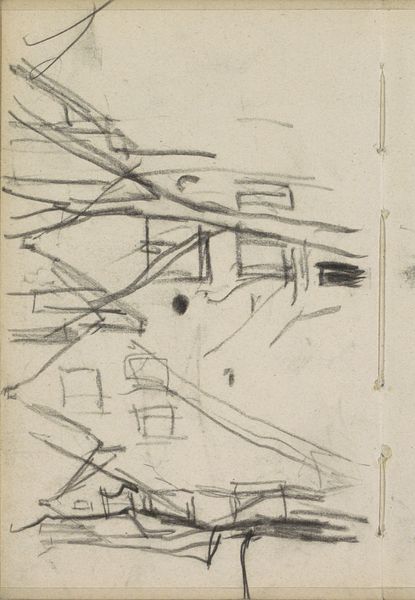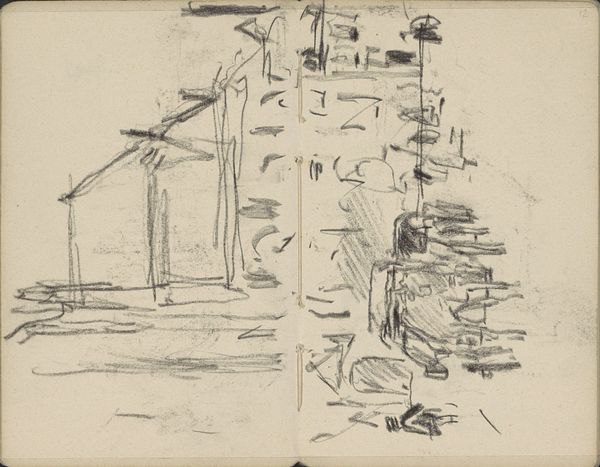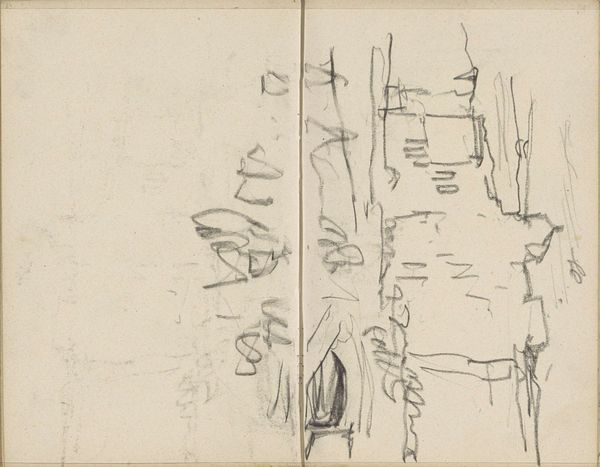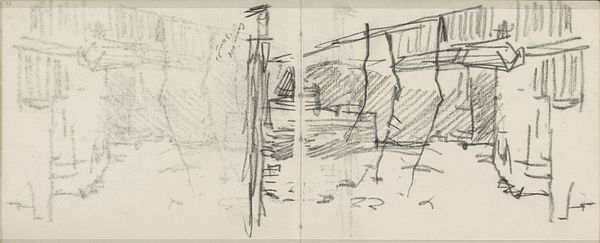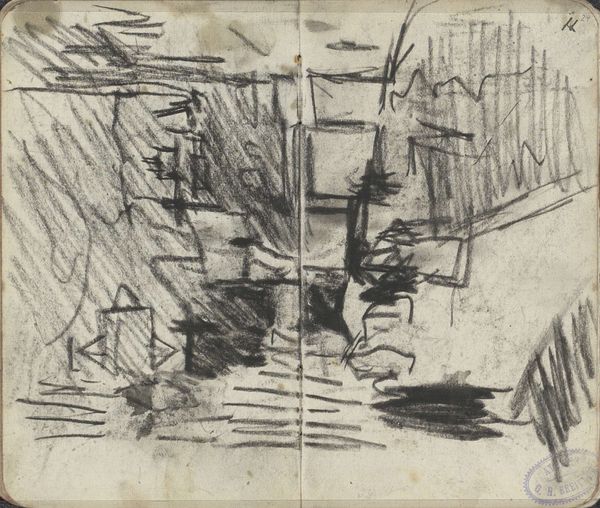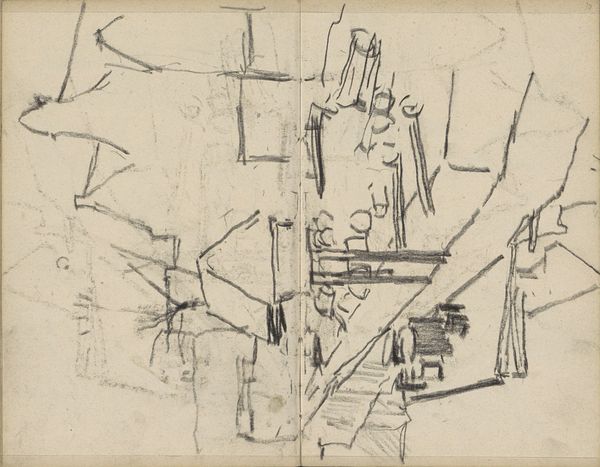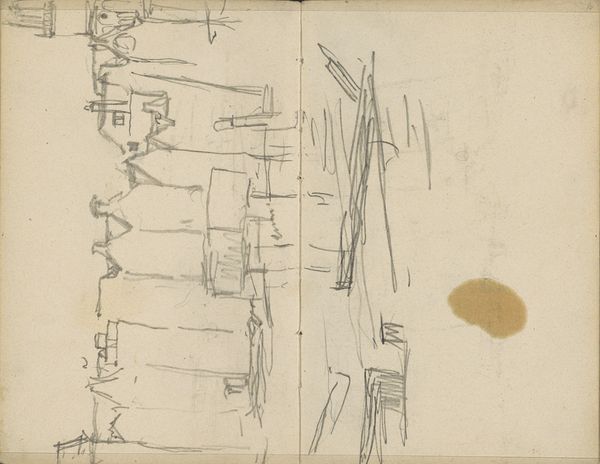
Copyright: Rijks Museum: Open Domain
Curator: The sketch before us, entitled "Gezicht op de Grote Bickersstraat te Amsterdam," was rendered circa 1903 by George Hendrik Breitner, an artist celebrated for his evocative cityscapes. The Rijksmuseum holds this compelling work in its collection. Editor: My immediate impression is one of fragmented immediacy, like a quickly captured thought. There's a rough quality, emphasized by what seems to be pencil or graphite, offering a raw glimpse of early 20th-century Amsterdam. Curator: Breitner was known for his engagement with the gritty realities of urban life, differing markedly from the idealizations found in traditional landscape painting. How does the choice of such a scene on Grote Bickersstraat intersect with prevailing social and political themes of that time? Editor: Well, examining the materiality gives us some insight. The immediacy suggests that Breitner was sketching directly from life, which means carrying supplies, finding a vantage point. But that medium would have been much more readily available to most, at least versus the paint. And notice that even the composition reinforces a working-class street scene, absent any hint of bourgeois life. The stark, minimalist rendering in graphite emphasizes the quotidian struggle, mirroring his era’s artistic shift toward capturing social reality. Curator: Absolutely. It presents a stark alternative to more romantic visions. The fleeting nature captured here mirrors the experiences of a rapidly changing society, documenting the physical environments shaped by industrial labor, immigration, and urban expansion and reflecting broader social changes through its candid portrayal of ordinary spaces. Editor: I find it striking how the lines suggest rather than define, evoking a sense of fleeting impermanence in a growing city. Breitner really hones in on the practical materiality and labor inherent in creating and maintaining such spaces, subtly challenging the traditional art hierarchy. Curator: Indeed, focusing on materials, Breitner uses graphite in a very intentional manner, allowing for transparency but without losing clarity. It makes the viewer question if this is documentation, observation, or something deeper regarding the socio-political fabric. Editor: Analyzing this work highlights the convergence of intention, material choice, and social observation. Seeing Breitner’s piece, rendered with accessible materials and straightforward, but impactful presentation gives a powerful voice. Curator: Ultimately, Breitner's vision transports us to an era marked by sweeping societal shifts, urging a reckoning with our world's trajectory then and today.
Comments
No comments
Be the first to comment and join the conversation on the ultimate creative platform.
